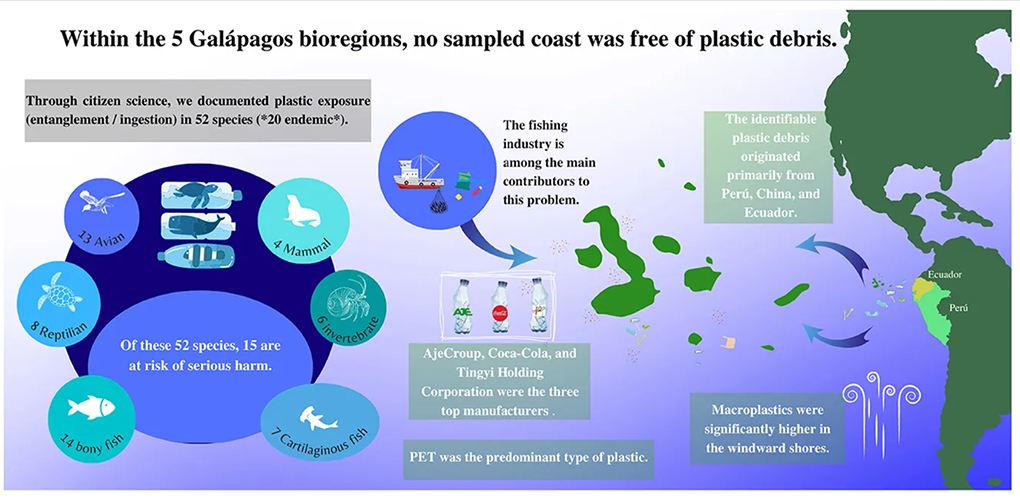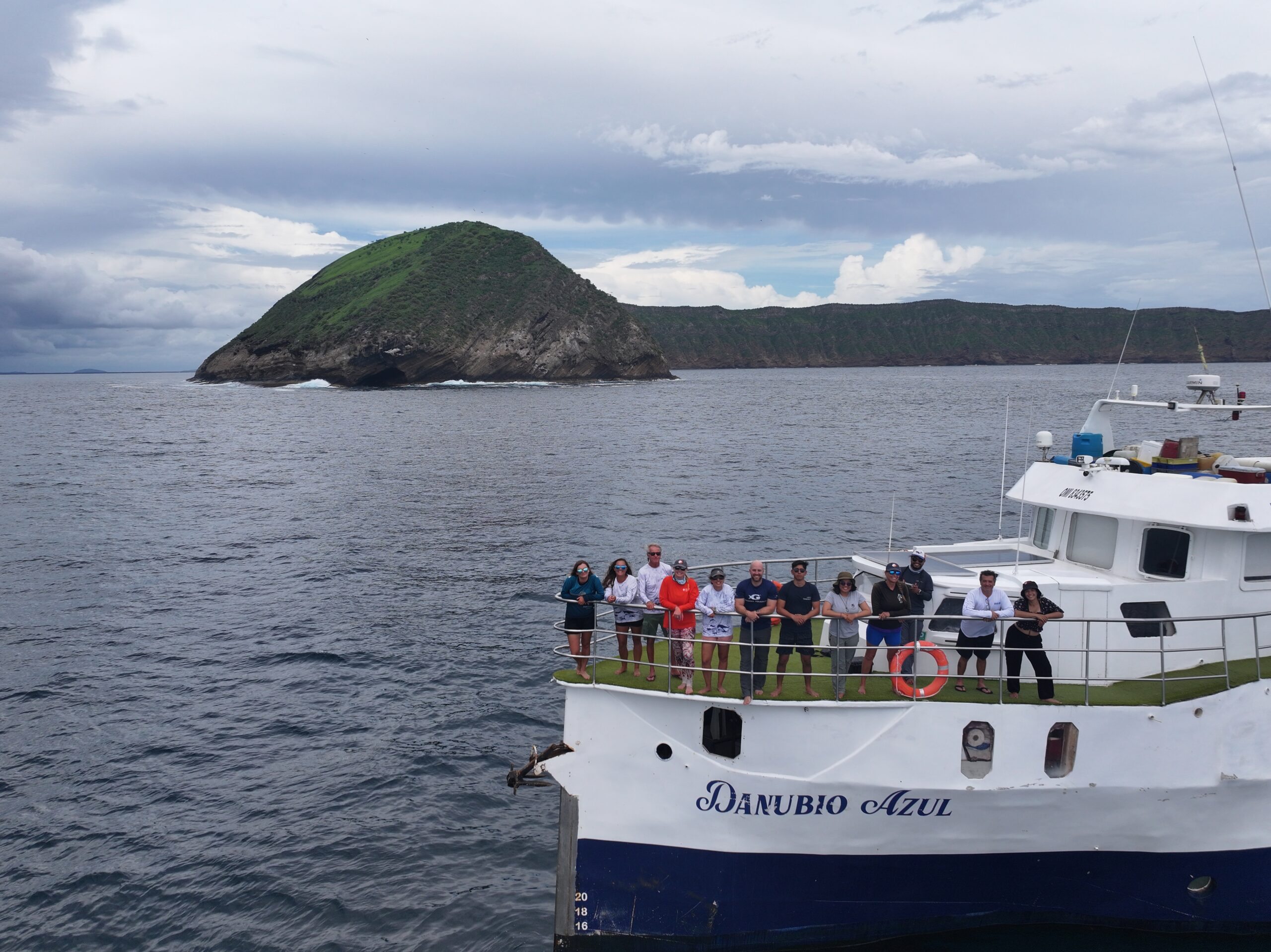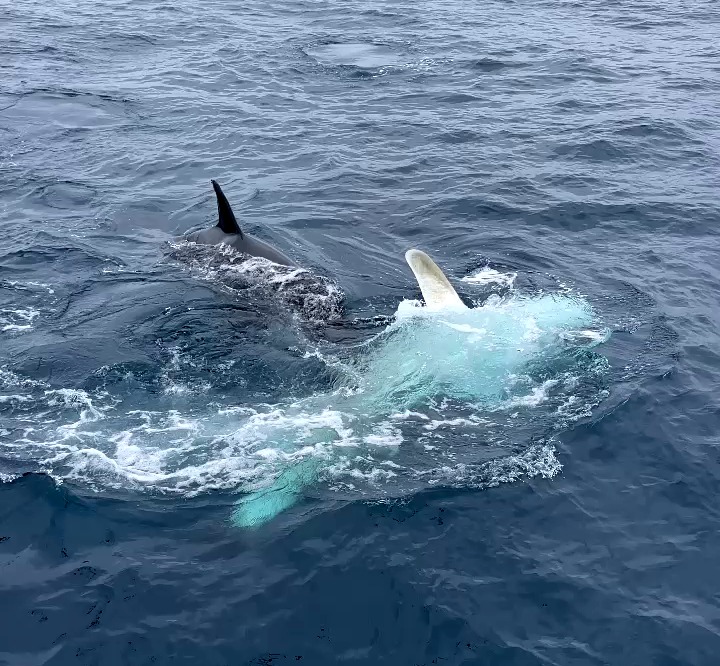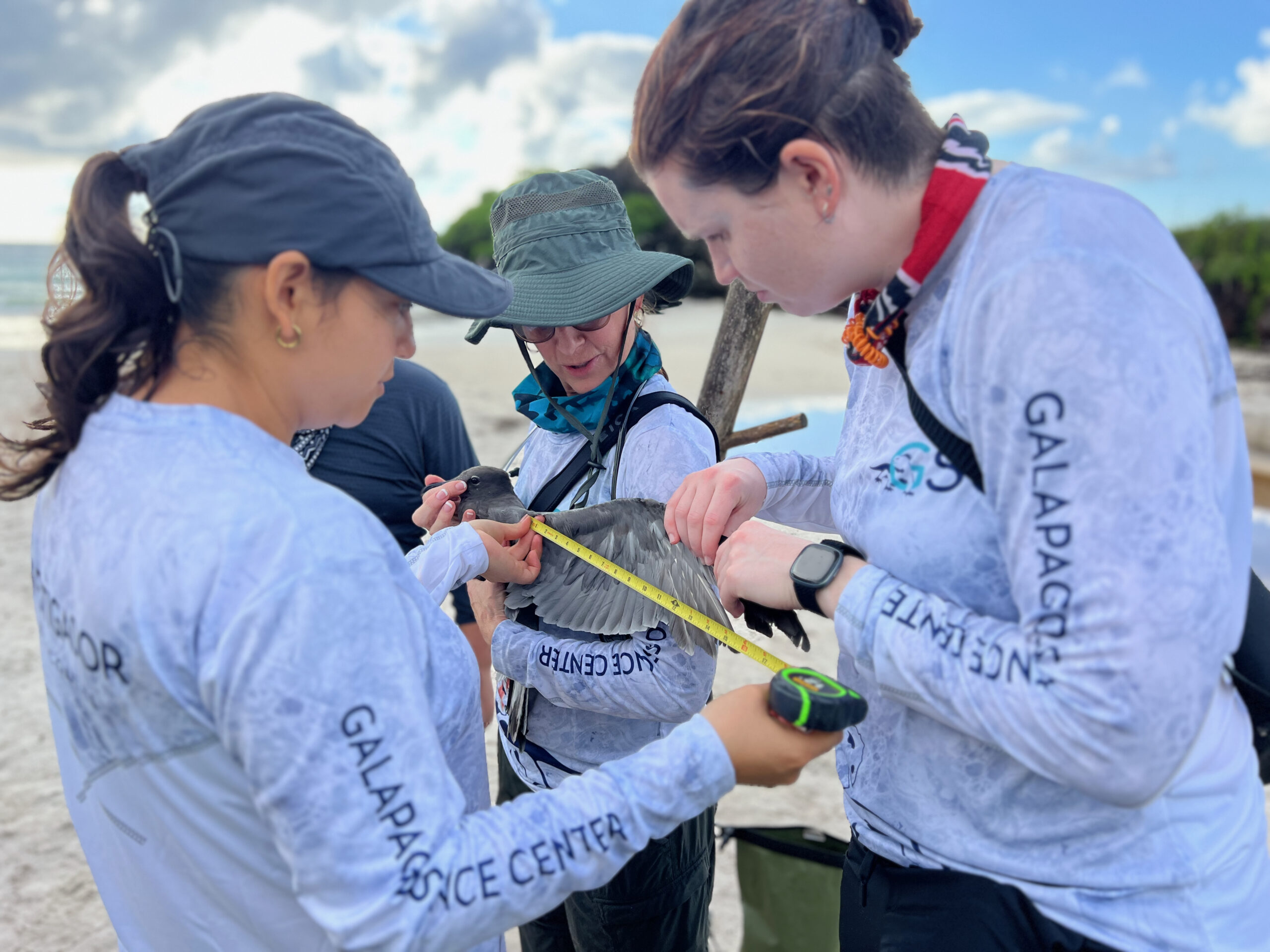La contaminación plástica (CP) es un problema global continuo y pervasivo que representa un riesgo para el archipiélago de Galápagos, a pesar de ser una de las regiones más prístinas y bien protegidas del mundo. Trabajando en estrecha colaboración con ciudadanos científicos, nuestro objetivo fue cuantificar y mapear la magnitud y los efectos biológicos de la CP. Con una abundancia de macroplásticos que varía de 0,003 a 2,87 artículos/m2, nuestra investigación indica que las cinco bioregiones de Galápagos muestreadas están contaminadas con CP a lo largo de sus costas. La distribución de estos desechos no es uniforme, siendo significativamente mayor en las costas de sotavento. Basándose en la información de identificación encontrada en los artículos examinados, el politereftalato de etileno (PET) fue el tipo de plástico más predominante que se origina tanto en productos de consumo como de pesca, principalmente de Perú, China y Ecuador. Los tres principales fabricantes fueron AjeCroup, Coca-Cola y Tingy Holding Corporation. A través de la ciencia ciudadana, documentamos la exposición a la CP en 52 especies (20 endémicas) en los ambientes terrestres y marinos de Galápagos, con exposición que ocurre de dos maneras: enredamiento e ingestión. Estas incluyen reptiles (8 especies), aves (13 especies), mamíferos (4 especies), peces cartilaginosos (7 especies), peces óseos (14 especies) e invertebrados (6 especies). Las cinco especies con mayor riesgo de sufrir daños graves debido al enredamiento (en orden decreciente) fueron identificadas como tortugas verdes, iguanas marinas, tiburones ballena, mobulas de cola espinosa y pinzones medianos. En contraste, las tortugas gigantes de Santa Cruz, las tortugas verdes, las iguanas marinas, los salemas de rayas negras y los leones marinos de Galápagos tenían el mayor riesgo de daño debido a la ingestión de plásticos. Nuestra investigación indica que la CP es un problema creciente en el archipiélago de Galápagos y que se necesita trabajo adicional para mitigar su impacto ahora y en el futuro.
Obtenga más información sobre el estudio aquí.






